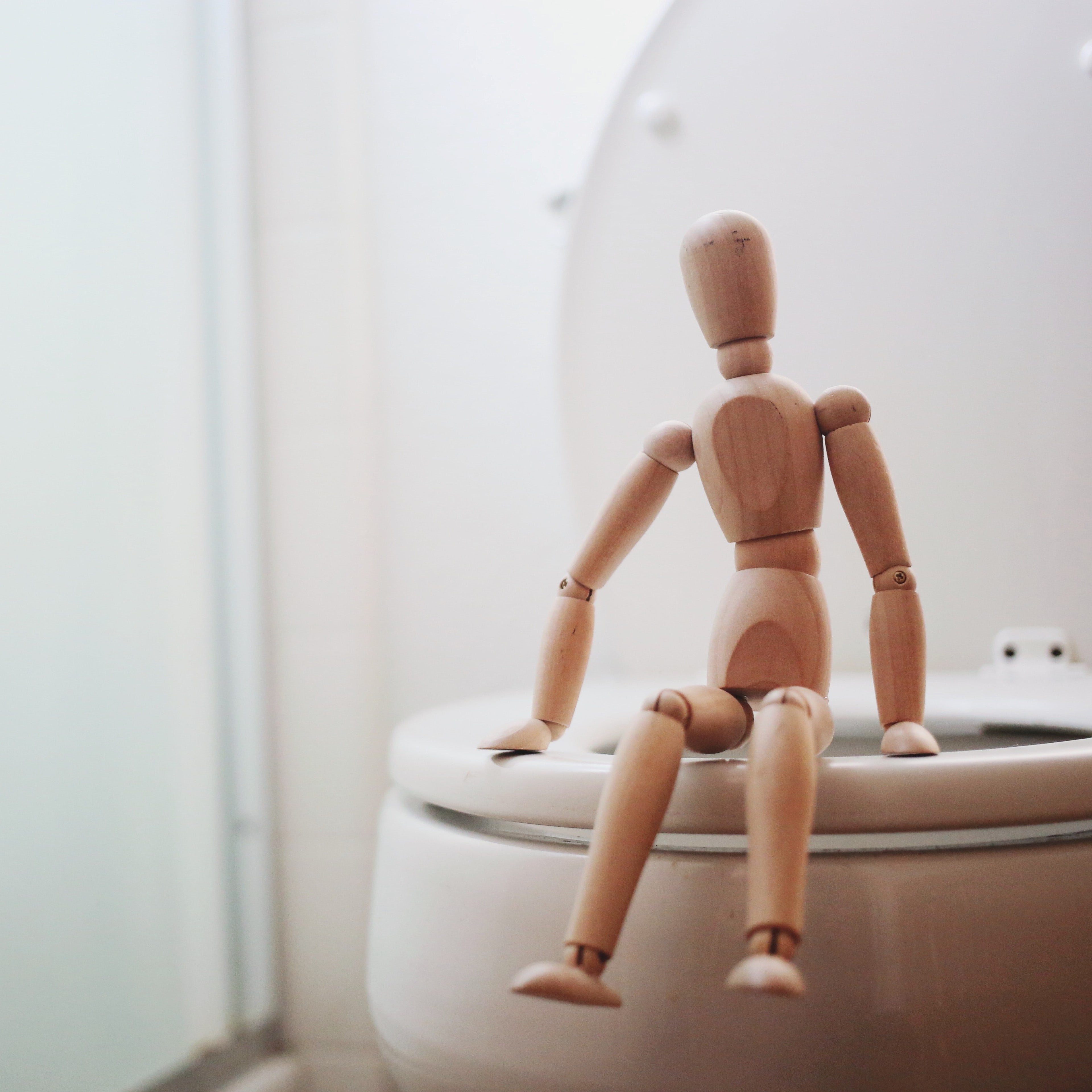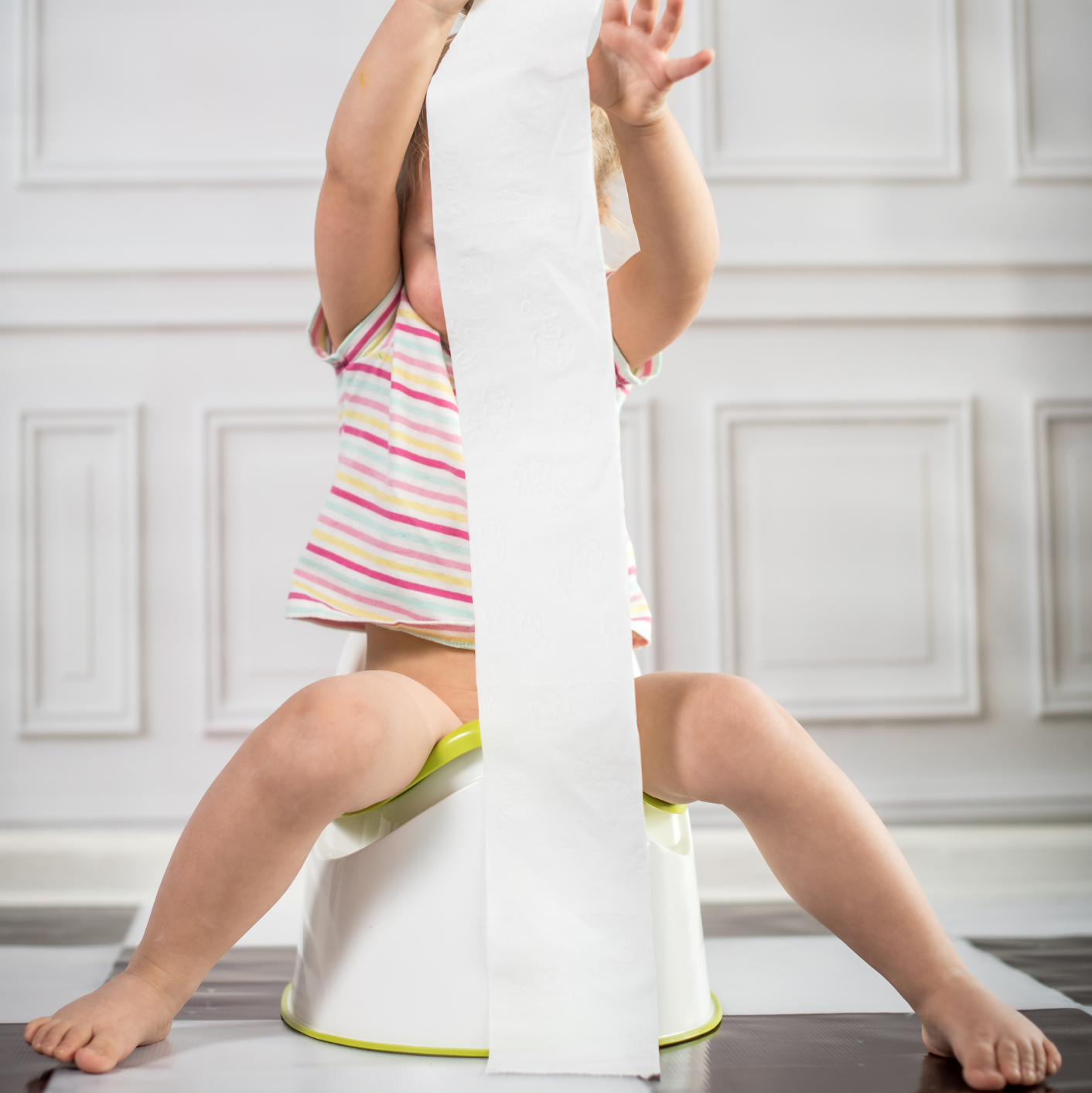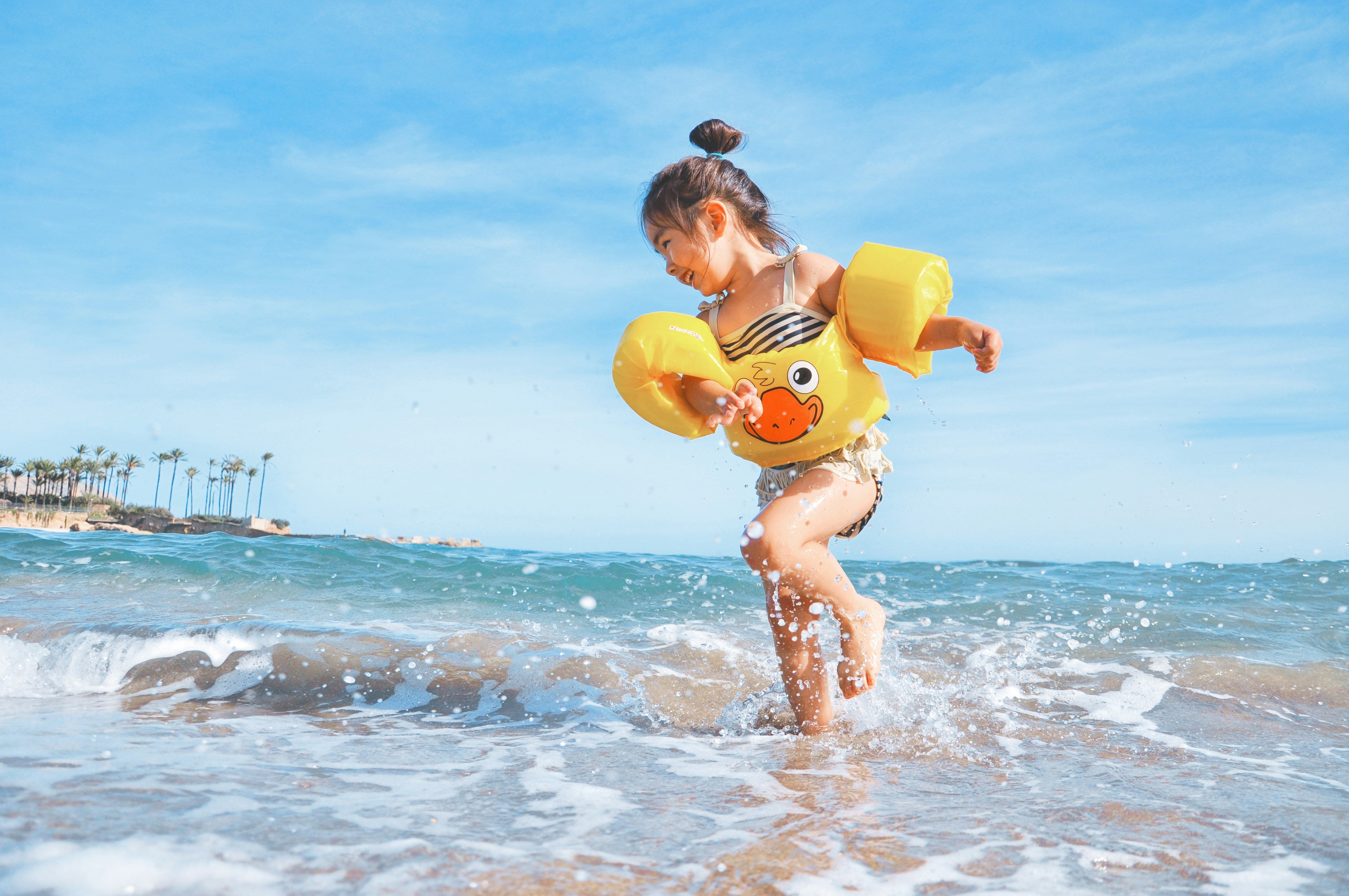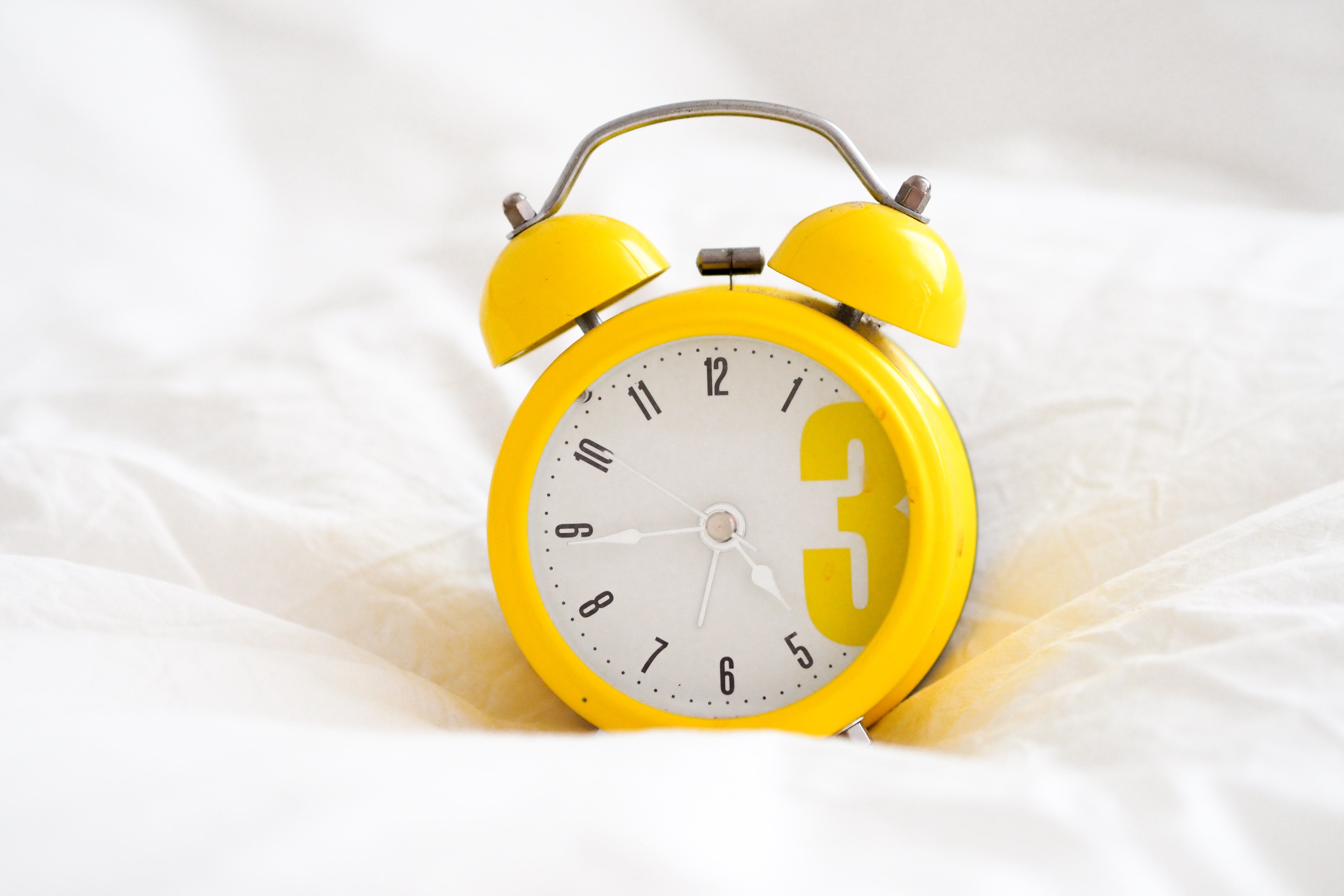When is My Child Ready for Toilet Training?- Tips and tricks to make toilet training easy and stress free

Ah toilet training! I think every parent you speak to will have some kind of toilet training story! It is such a hot topic amongst parents and strangely can come with so much pressure. If you have a toddler you will no doubt have heard the question ‘are they toilet trained yet?’ Often from a well meaning friend or family member, but it can be really frustrating and often triggering when these kinds of questions or comments come your way. So, how do you know if your child is ready for toilet training?
For my 3 kids toilet training started when they were around 2 years old. For each child we waited until the summer months when spending the day in minimal clothes (if any at all!) was acceptable. We put zero pressure on ourselves, and our kids, and it was a smooth and seamless transition. Below I will share with you some ways to recognise if your child is ready and some helpful tips that have helped us as a family along the way.
It is important to remember from the get go that children are not robots. While there may be ‘averages’, there are also exceptions. And that is totally fine. Most children are ready to start toilet training between the ages of 18 months- 2 ½ years. However there will always be toddlers who are younger, and older than the suggested ages, which is also completely normal.
Your child might be ready for training if they:
- are walking and can sit for short periods of time
- are becoming generally more independent, including saying ‘no’ more often
- are becoming interested in watching others go to the toilet
- have dry nappies for up to two hours at a time
- try to tell you when they are weeing or pooing in their nappy
- begin to dislike wearing a nappy, perhaps trying to pull it off when it’s full
- can pull their pants up and down independently
HELPFUL EQUIPMENT FOR TOILET TRAINING
It might sound obvious, but potties are one of the best things you can buy when beginning toilet training. They are great because you can move them around and keep them nice and close to your little one, which will increase the chance of them making it in time. We would have the potty in the lounge room so it was always visible and available. At first, our kids would sit on the potty with their pants on and just read a book! It is important to let them see it and try it out, and know that it is theirs and it is fun.
The warmer summer months are a great time to start toilet training as you can allow your kids to have some nappy free time and have the potty on hand.
Once your child is used to the idea of going to the potty you can move it closer and closer to the big toilet until they can eventually use the toilet.
The items below are a great help when this time comes.
- Small step/ ladder your child can use for getting onto the toilet and resting their feet while sitting. We used this one but there are plenty of options out there
- a kids seat which fits on a standard toilet seat. You can get these from any of your big department stores.
TRAINING PANTS AND PULL UPS
Children are more likely to understand the idea of going to the toilet if they are not wearing nappies anymore so pull ups or training pants can be very useful in this transition.
- Training pants are absorbent underwear for toilet training. They’re less absorbent than nappies but can hold in small accidents. Once your child is wearing training pants, dress your child in clothes that are easy to take off quickly.
- Pull-ups/nappy pants might help your child get used to wearing underwear. They’re more absorbent than cloth training pants, which can also mean the child doesn’t notice when they have wet their pull up. However they can be handy if you’re going out or have a long car trip.
UNDERPANTS
Buying undies for the first time is a very exciting step for your child (and let’s be honest, for us parents too!) Bringing your child along with you to choose their own undies can be a really fun activity to do together as it builds the excitement and includes your child in the process. Target and Kmart have a great selection of licenced kids undies. I mean what toddler would not get excited about some Bluey or Disney undies?!

GETTING STARTED WITH TOILET TRAINING
My first tip here is don’t put a time limit on toilet training. I often hear parents say ‘this weekend we are going to toilet train Mr 2’. I know there are many programs/people who promote this, however in my experience as a mum of 3, it is a sure fire way to create stress and pressure on not just you, but also your child. By having a relaxed and flexible approach, you are starting off this next phase on the right foot.
It’s much easier to be hanging out at home for a few days when you start toilet training, so beginning on a weekend or holiday might be a good time to start. However the time will come when you will want to start getting out and about. When that day comes there are a few things you might want to keep in mind.
- Keep the outings short and local to begin with
- Make sure the places you are going have toilets and if not look at bringing a potty with you
- Dress your child in some training pants or a pull up so accidents are easier to manage
- Bring a change of clothes, spare nappy and waterproof bag just in case your little one has an accident
- Get everyone onboard! Grandparents, childcare, babysitters etc with the new toilet training plans to ensure there is consistency, which will give your child the best chance of success.
WHEN TO TAKE YOUR CHILD TO THE TOILET
- Incorporate going to the toilet into your child’s daily routine. This is when developing habits is crucial so consistently getting your child to use the potty or toilet in the morning and before or after snacks and meals is a great place to start.
- When you notice your child squirming around, passing wind, being quiet or moving away from you try a little trip to the potty.
- It’s really important to remind your child to go to the toilet throughout the day. It is not part of their daily habits yet so they’ll need reminding.
- If your child takes much longer than around 2 minutes to do their business then its best to come back later and try again. Remember we want to make the toilet training process natural and stress free.
PRAISING YOUR CHILD
- Make a big deal when your child does their first wee or poo on the potty and encourage them by saying things like ‘WOW, well done for doing wees on the potty’, ‘you’re a big girl or boy now’. Once going to the potty/toilet starts to become a habit slowly reduce the amount of praise you are giving your child.
- If your child has an accident try and stay patient and don’t make a big deal of it. Kids are like us adults, they thrive when we focus on the good things they are doing. It is helpful to say things like, ‘that’s ok. You did such a great job trying to sit on the potty’, ‘not to worry, I am so proud of you for trying’, ‘you’re still learning. Let’s get some dry clothes on you’.
DRESS YOUR CHILD IN SUITABLE CLOTHES
- Stop using nappies during the day and instead only at night time. This will help to break the association with doing wees or poos in their nappy. Instead using training pants or pull ups.
- Dress them in clothes that are easy to take off. In summer you can let your child have some rudy nudy time or just wear underpants while you’re at home. Avoid clothes like overalls or long dresses that are hard to manage when going to the toilet, especially as it can often be urgent!
All Children are different and learn to use the toilet at their own pace. It might take days, weeks or months. And possibly longer for poos than wees. As parents one of the most important things to do is stay calm and create a low stress environment for your child around going to the toilet or potty.
TOILET TRAINING ACCIDENTS AND DIFFICULTIES
Accidents and difficulties are part of toilet training. All children have them, and they may continue well after your child is ‘toilet trained’.
Children might get upset because of an accident or setback. If this happens, reassure your child that it doesn’t matter and there’s no need to worry.
Increase the odds of your child having success by doing the following.
- If your child says they need to go the toilet take them straight away. Even if you are in the middle of something, stop if it is safe to do so and focus on your child.
- Remind them if they haven’t been to the toilet for a while. Children might get distracted and forget to go to the toilet. Remind them to go to the toilet before car trips, long activities or any other event that would be hard to use the toilet.
- Keep the potty or toilet close by and easy to get to.
- Ask your child to wee just before going to bed.
- Doing poo in the potty or toilet can often take longer. My kids would ask to put their nappies on to do a poo, even when they were using the potty confidently for wee. We just rolled with it and eventually, we didn’t need nappies anymore.
The key is to follow your child’s lead.
STAYING DRY OVERNIGHT
It can take toilet trained children months or even years to become dry at night.
Your child might be ready to stop wearing a nappy at night if they have a dry nappy first thing in the morning for 2 or more consecutive days. When this happens you can try stopping nappies at night. However most children take a few years to stop night wetting after they have been toilet trained during the day. Don't forget to pop a waterproof sheet protector on top of the fitted sheet so if there is an accident, you don't need to strip the entire bed. Click here to view some super stylish and practical sheet protectors.
You can also see the sheet protectors called Bed Mates, in action below.
While the tips above helped us as a family, every family works differently and it is so important to do what works for you. Trial and error is a great thing as you will start to learn what does and doesn’t work. Listen to people’s advice who have gone before you, however only take on board what you think will work for you, and most importantly your child. With lots of love, reassurance and positivity, toilet training can be an easy and even fun process.
For more tips and tricks on toilet training, or anything parent/child related, feel free to contact me at goodnight@themidnightgang.com




Comments